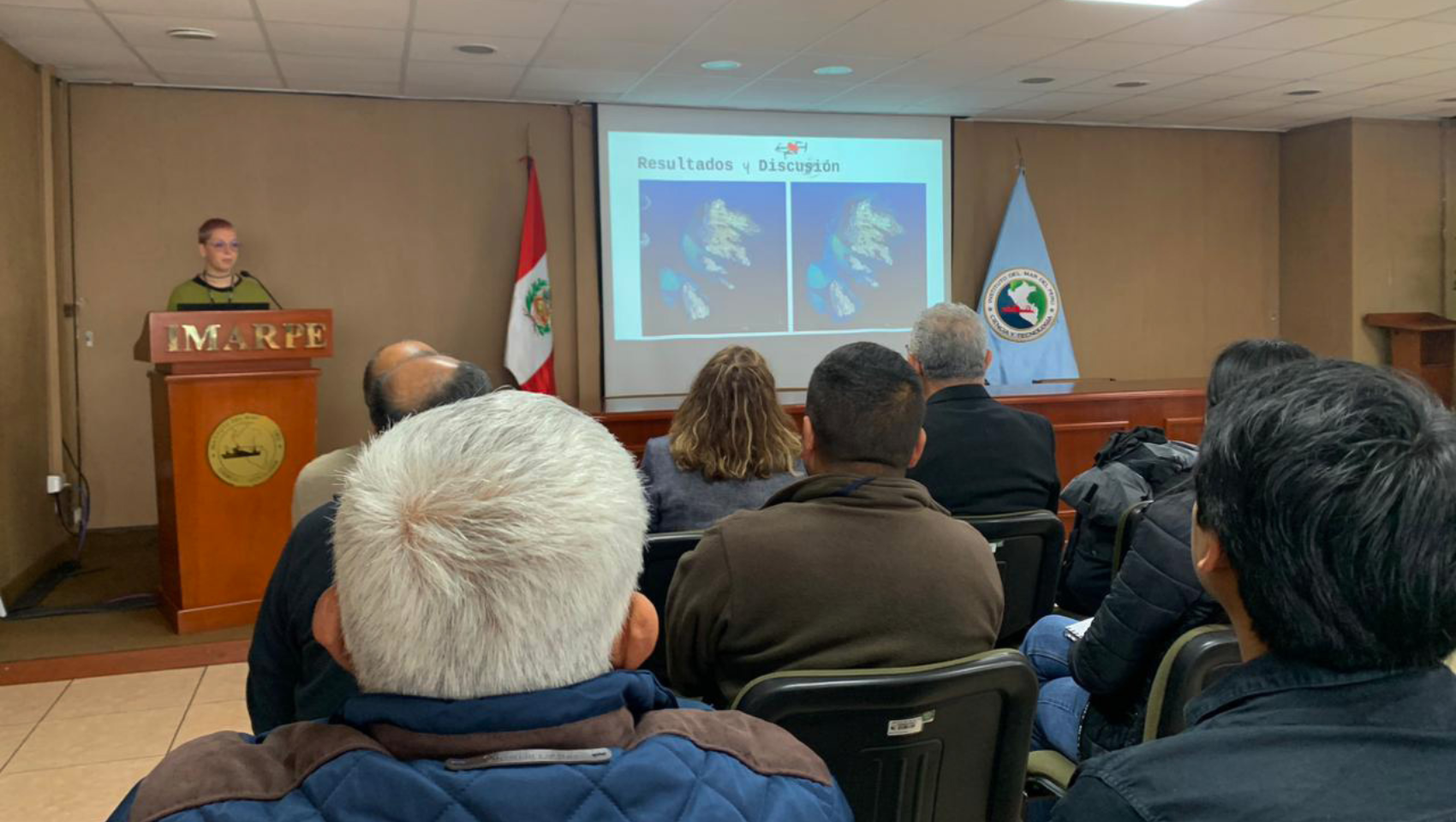Imarpe staff trained by international seabed survey specialist

From August 13th to 16th, the sessions of the course “Seafloor data and image processing for deep-sea benthic habitat studies” were held. This training was organized by the Instituto del Mar del Perú (Imarpe) in collaboration with the Peruvian Society for Environmental Law (SPDA) and was given by the researcher Andrea Varzi MSc, from the University of Milan (Italy).
The inauguration was presided by Luis Vásquez Espinoza, Director General of Oceanographic Research and Climate Change of Imarpe. Mr. Vásquez highlighted the importance of studying the seabed and its ecosystems, which are home to a wide range of biodiversity. In addition, he added, it contributes to the processing of bathymetric data and images of the seafloor and the use of programs to model and characterize benthic habitats.
During the four days of the course, various topics related to acoustic surveys and echosounder systems were discussed in theory, and coastal and underwater photogrammetry, mapping and data visualization using Geographic Information Systems (GIS) were introduced. The topics covered were complemented with practical sessions thanks to the collaboration of Quality Positioning Services, which provided licenses for the Qimera and FGMT bathymetric data processing programs used during the course.
“The seafloor is an unexplored habitat and is home to organisms that science does not yet know about. By expanding research and understanding of these species, we can know what is out there and establish policies and regulations that allow for their protection and maintain their benefits for all ecosystems,” said Ernesto Bustamante, Project Coordinator of SPDA’s Marine Governance Program.
The participating group included the Marine Geology Laboratory of the Chemical Oceanography and Geology Functional Area and the Hydroacoustic Research Functional Area of Imarpe. Also present were representatives of the National Service of Protected Natural Areas (Sernanp), the Directorate of Hydrography and Navigation, the Universities of Engineering and Agrarian La Molina, and Jimpson Davila, Marine Conservation Manager of the Marine Governance Program of the SPDA.